Do you have an axolotl tank in your home? If so, you’ll want to make sure that it’s filled with the best plants possible. It can be difficult to know which ones are suitable for these unique creatures and their aquatic habitat! Don’t worry—I’m here to help. In this article, I’ll provide guidance on how to choose the perfect plants for your axolotl tank.
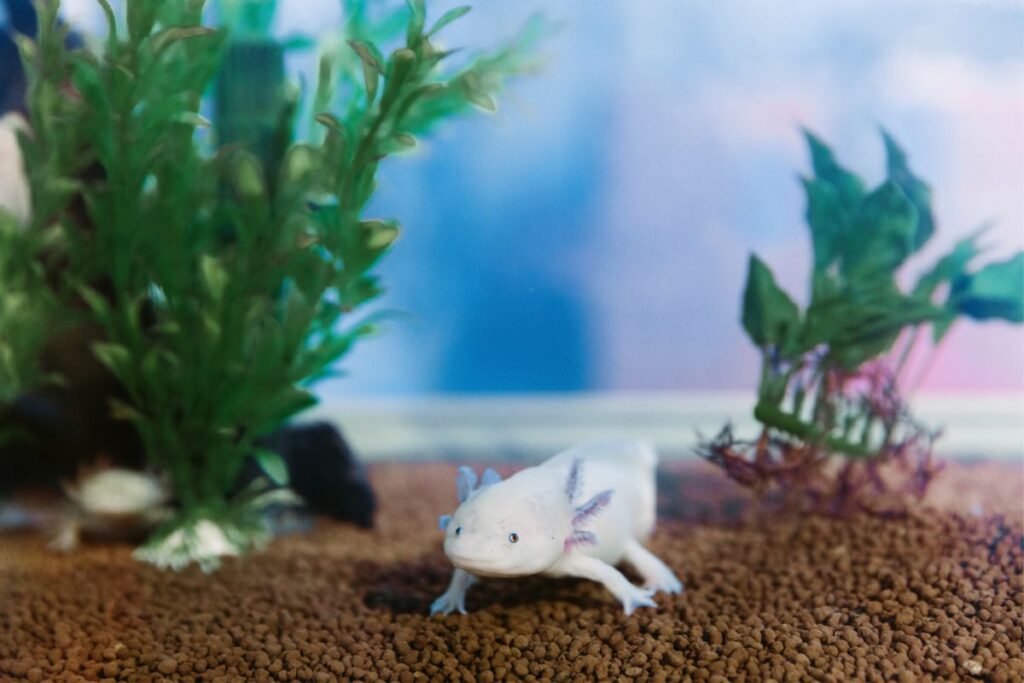
Are you looking for some greenery to spruce up your aquarium? Or maybe you’re wondering if certain plants could benefit your pet axolotls? Either way, there are several varieties of aquatic plants that would work well in an axolotl tank. From floating species like duckweed and water lettuce to rooted options such as Brazilian Pennywort or Java Fern, there is a wide selection available to suit any taste.
Not only do these plants add aesthetic appeal, but they also play important roles in maintaining healthy water conditions. By absorbing carbon dioxide and releasing oxygen into the water column, they create a more hospitable environment for your pets—plus they offer plenty of hiding spots too! So let’s take a closer look at the best plant choices for axolotl tanks and learn why each one makes such a great addition.
Contents
- 1 Best Plants For Axolotl Tank
- 1.1 Hornwort
- 1.2 Anubias
- 1.3 Java Fern
- 1.4 Pothos
- 1.5 Duckweed
- 1.6 Water Lily
- 1.7 Moss Balls
- 1.8 Frogbit
- 1.9 Water Lettuce
- 1.10 Banana Lily
- 1.11 Pennywort
- 1.12 Amazon Swords
- 1.13 Water Wisteria
- 1.14 Brazilian Waterweed
- 1.15 Water Sprite
- 1.16 Floating Crystalwort
- 1.17 Hygrophila Pinnatifida
- 1.18 Elodea
- 1.19 English Ivy
- 1.20 Water Hyacinth
- 1.21 Red Root Floater
- 1.22 Sweet Potato Vine
- 1.23 Sagittaria
- 1.24 Salvinia Natans
- 1.25 Guppy Grass
- 2 Benefits Of Plants In Your Axolotl Tank
- 3 Disadvantages Of Plants In Your Axolotl Tank
- 4 Can Axolotls Have Any Plants In Their Tank?
- 5 Conclusion
Best Plants For Axolotl Tank
Hornwort
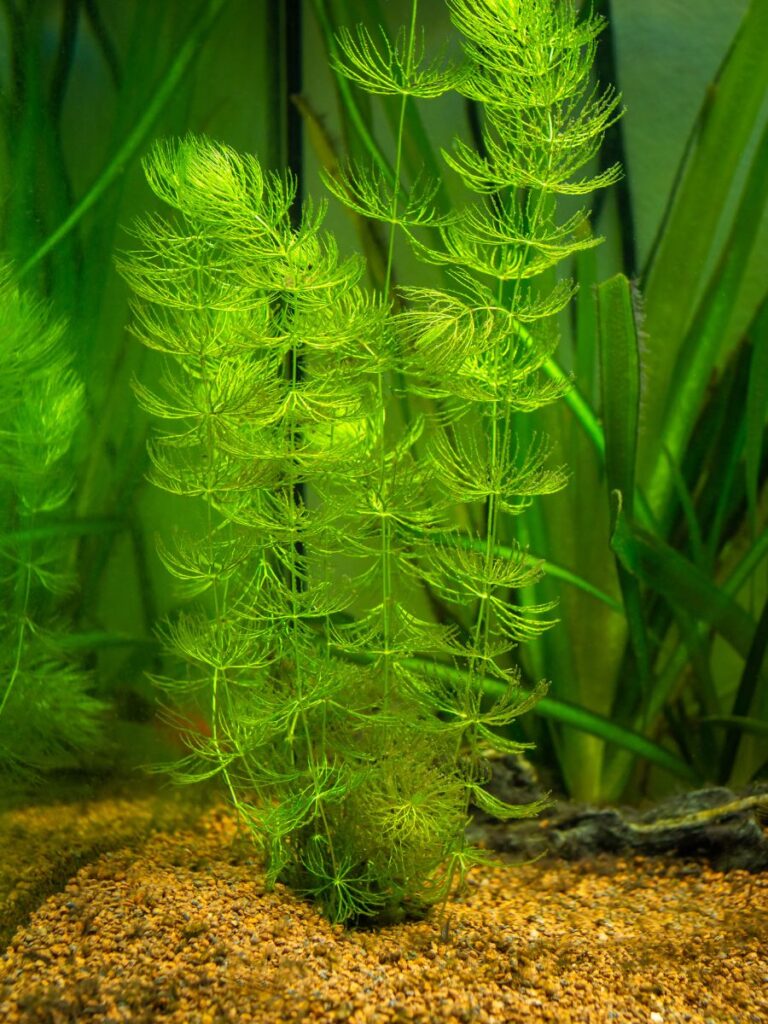
Hornwort is a great addition to any axolotl tank! Not only is it an aesthetically pleasing plant, but it also provides lots of beneficial qualities for the environment. Hornwort aquariums are known for their ability to produce oxygen and absorb ammonia, helping create a healthy balance in your tank. It’s also incredibly easy to care for and maintain—hornwort doesn’t require much light or nutrients, so you don’t have to worry about constantly pruning or fertilizing it. Plus, its long stems provide plenty of places where your axolotl can hide away from predators. All in all, adding hornwort to your axolotl tank will ensure that you’re providing a safe and supportive home for them!
Anubias
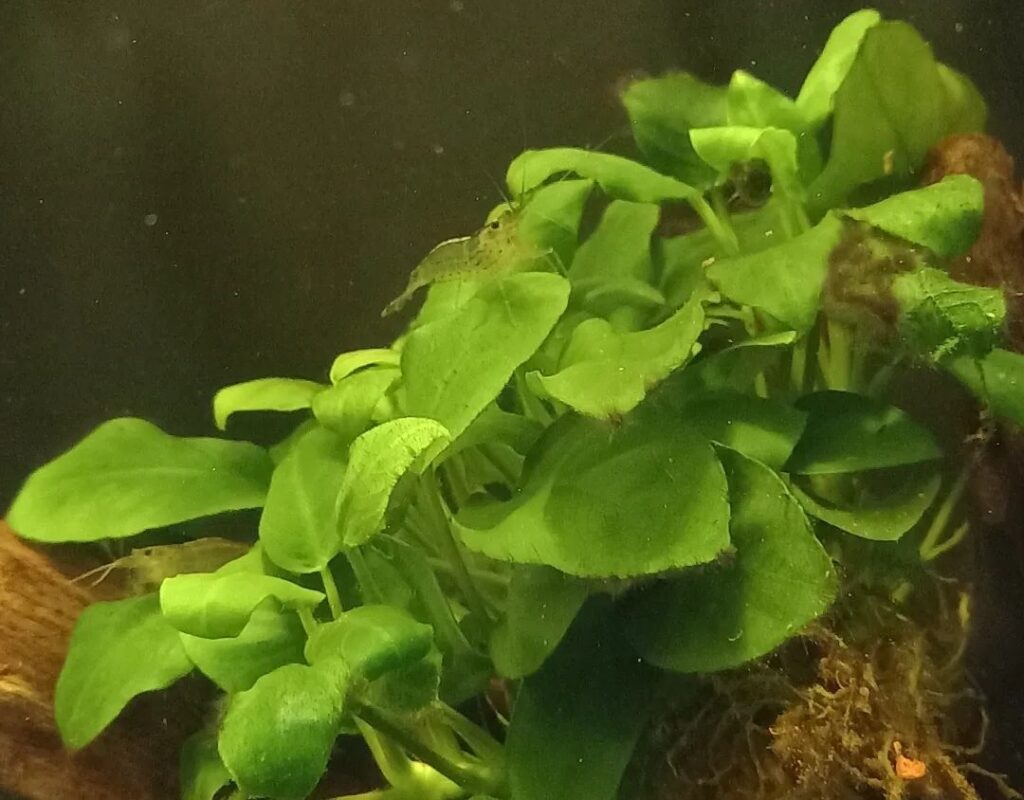
I’m a big fan of Anubias for axolotl tanks. It’s one of the few plants that won’t be eaten by my fishy friends, and it looks great! Here are three reasons why I love Anubias in my tank:
- Anubias nana – This is an incredibly hardy plant with beautiful leaves that come in shades of green and brown. Plus, it doesn’t require much maintenance—just some occasional pruning to keep it looking its best.
- Anubias hastifolia – Not only does this variety look amazing when planted together in groups, but it also grows quite quickly so you don’t have to wait too long before seeing results. Plus, because of its size and shape, it fits well into any tank setup without taking up too much space.
- Anubias barteri – This is a slower-growing species that adds a unique texture to your aquarium’s environment. It has thick foliage which makes for great hiding places for your pet axolotls or other small aquatic creatures living within the tank.
In short, these three types of Anubias provide different benefits depending on what type of aesthetic appeal you’re looking for in your aquarium setup. They all add beauty while at the same time ensuring safety since they can resist being torn apart by even the hungriest inhabitants!
Java Fern
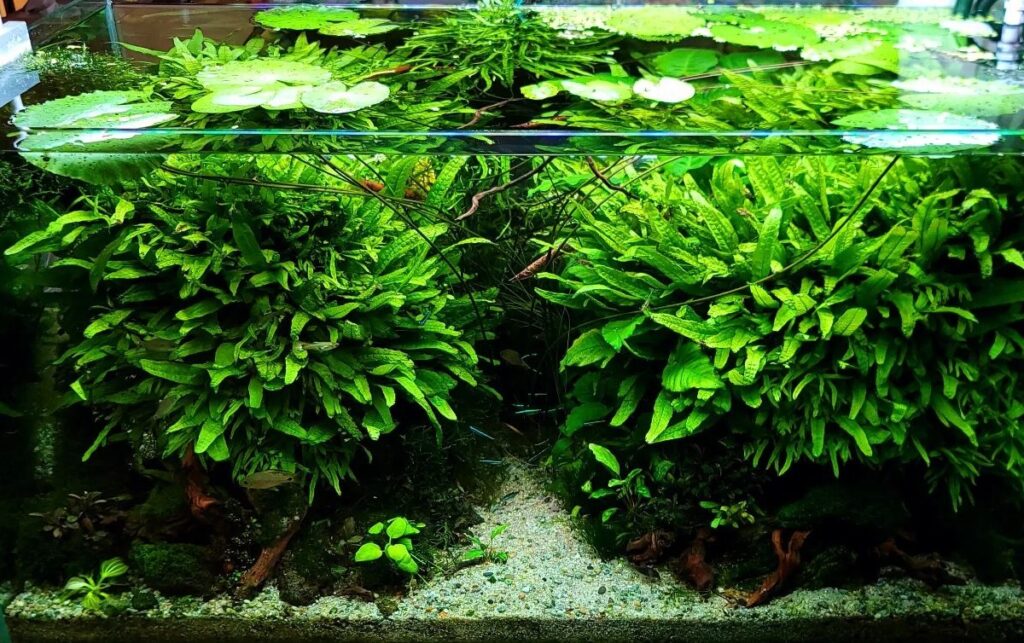
Java Fern, also known as Microsorum Pteropus, is a popular choice for axolotl tanks. They’re easy to care for and can thrive in many different conditions. Java ferns have an attractive appearance with their large fronds that look like leaves. False Java fern is another variety of this species that has smaller sizes but similar characteristics.
When adding plants to your tank it’s important to make sure they don’t contain any chemicals or pesticides. You should always rinse them off before putting them into the tank. The java fern can be attached to driftwood or rocks so that its roots can take hold and stay upright in the water. It will eventually grow quite tall if given enough space, light, and nutrients. Be careful not to overfeed the fish since extra waste from eating too much can cause algae growth on the plant leaves.
Java fern provides natural filtration by trapping small particles of debris and helping keep the water clean, making it great for use in aquariums housing more sensitive species such as axolotls. Additionally, these plants help create shade and hiding spots for shy creatures, providing some relief from bright lights during daytime hours. With proper maintenance and care, you’ll soon have an impressive display of greenery in your aquarium!
Pothos
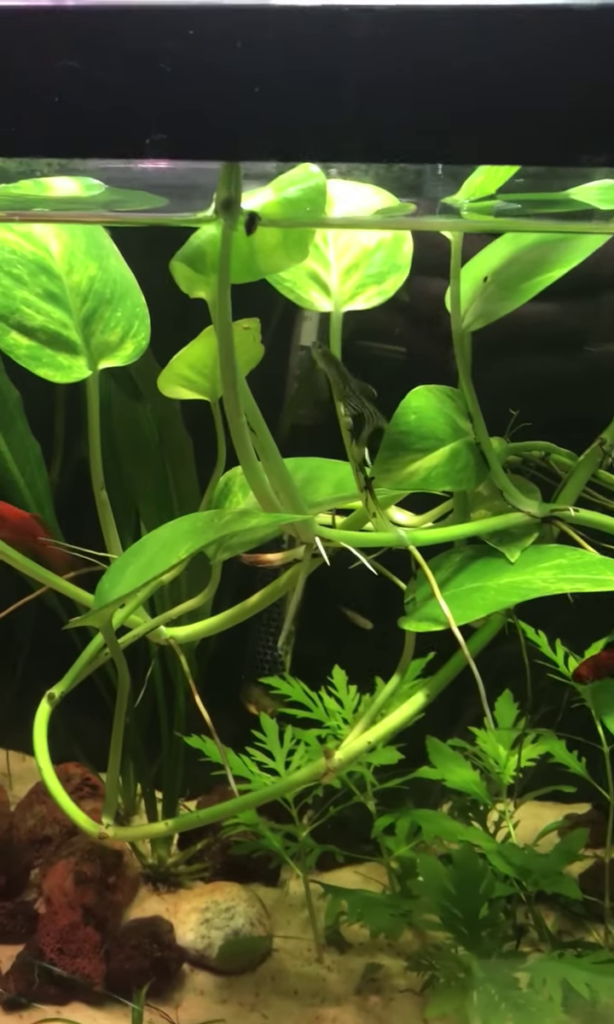
The next type of plant that is great for an axolotl tank is Pothos. It’s a hardy and adaptable species, making it a great choice for the beginner aquarist. Plus, its trailing vines make it perfect for enhancing the look of your aquarium.
Here are some benefits of having Pothos in your axolotl tank:
- Its low maintenance needs make caring for Pothos easy—you don’t need any special tools or knowledge!
- It can tolerate a wide range of temperatures and lighting conditions so there’s no need to buy expensive equipment.
- The long trailing leaves add a unique aesthetic appeal to your tank.
- You can even trim them back if they get too long!
Pothos also helps maintain water quality by absorbing toxins like nitrates and ammonia from the water column which keeps your axolotls safe and healthy. And since this plant doesn’t require too much maintenance, it provides great value when considering how beneficial it is to have in an axolotl tank. So if you’re looking for something beautiful yet easy to care for, then pothos could be just what you need!
Duckweed
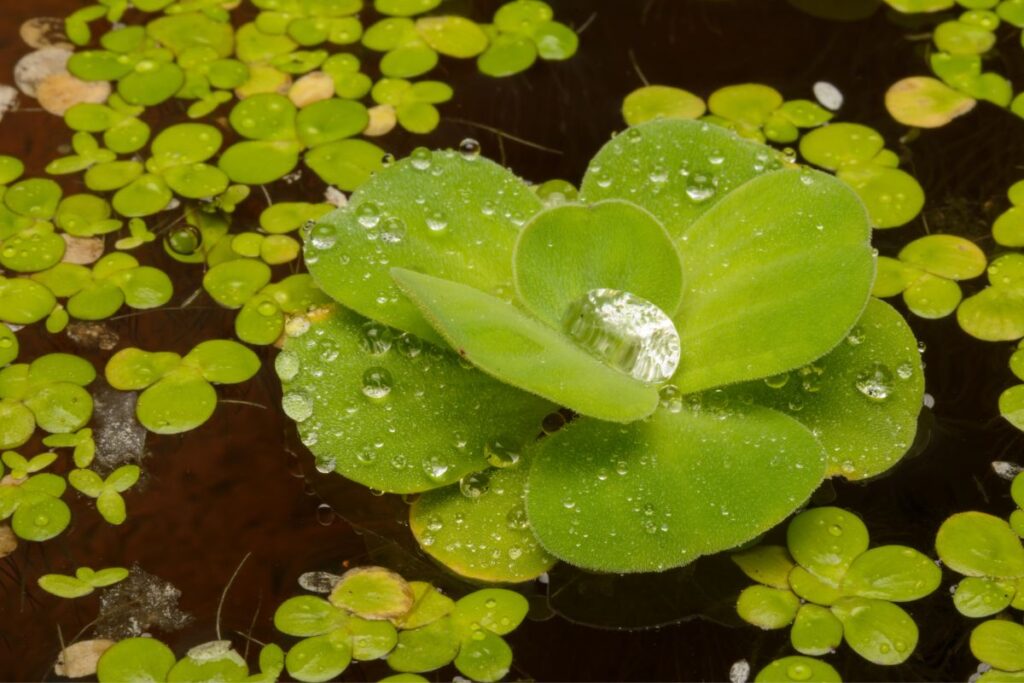
Duckweed is one of the best plants for an axolotl tank. It’s a type of pondweed, and it’s incredibly low-maintenance. This floating plant grows quickly, and its small size makes it great for tanks of any size. In addition to providing coverage from the sun and hiding places for your axolotls, duckweed also helps keep the water clean by filtering out debris. Its roots absorb toxins that accumulate in the water, which prevents them from building up over time.
The only downside to having duckweed in an axolotl tank is that it can grow quite rapidly if not maintained regularly. Fortunately, this isn’t too difficult—you can simply scoop some of the excess growth out with a net or other tool every so often. With regular upkeep, you’ll be able to enjoy all the benefits that come along with having duckweed without worrying about it taking over your aquarium.
Duckweed is truly one of the best options when it comes to adding live vegetation to your axolotl tank—its ease of maintenance combined with its filtration capabilities make it a great choice for keeping your aquatic pets happy and healthy!
Water Lily

Moving on from duckweed, a great plant for the axolotl tank is the water lily. Water lilies are an aquatic type of lily that float on top of the surface of the water and provide wonderful coverage. They also provide some shade to help keep your axolotls cool during warm summer months.
Because they’re so easy to care for and maintain, water lilies make a great choice for any beginner aquarist. You don’t need much to start with—just light soil or gravel in the bottom of your aquarium, add some fertilizer and you’re good to go! The floating leaves will spread out over time, creating a beautiful display. While not necessary, it can be helpful to tie down their stems at first until they grow large enough to stay put without assistance.
Water lilies come in many varieties, but all require plenty of sunlight—at least 8 hours per day—for optimal growth. Additionally, they do best when kept away from stronger currents which can damage their delicate petals. With proper maintenance and adequate lighting, however, these lovely flowers will continue to blossom year after year adding both beauty and oxygen to your tank’s ecosystem!
Moss Balls
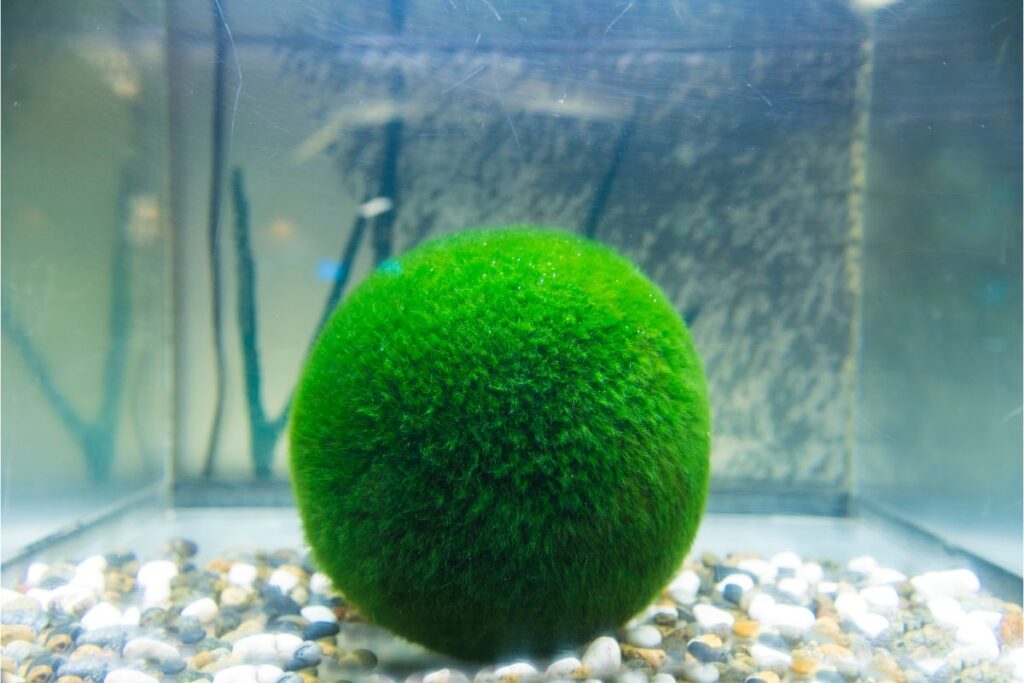
Moss balls are a great addition to an axolotl tank and offer several benefits. Here is why they made such a great choice:
- Easy Care – Moss balls require very little attention, making them ideal for busy people who don’t have the time or energy to take care of more complicated plants.
- Aquarium Beauty – They look beautiful in any aquarium setup, adding texture and color to your axolotl’s home.
- Water Quality Benefits – Moss balls help improve water quality by absorbing excess nutrients from the water column and reducing ammonia levels.
- Low Maintenance – As long as you keep up with regular maintenance such as removing dead leaves or trimming back overgrowth, moss ball care is simple and hassle-free!
The only downside to these aquatic wonders is that they can be quite expensive compared to other types of aquarium plants, but their low maintenance requirements make them well worth the investment if you’re looking for something special for your axolotl’s habitat!
Frogbit
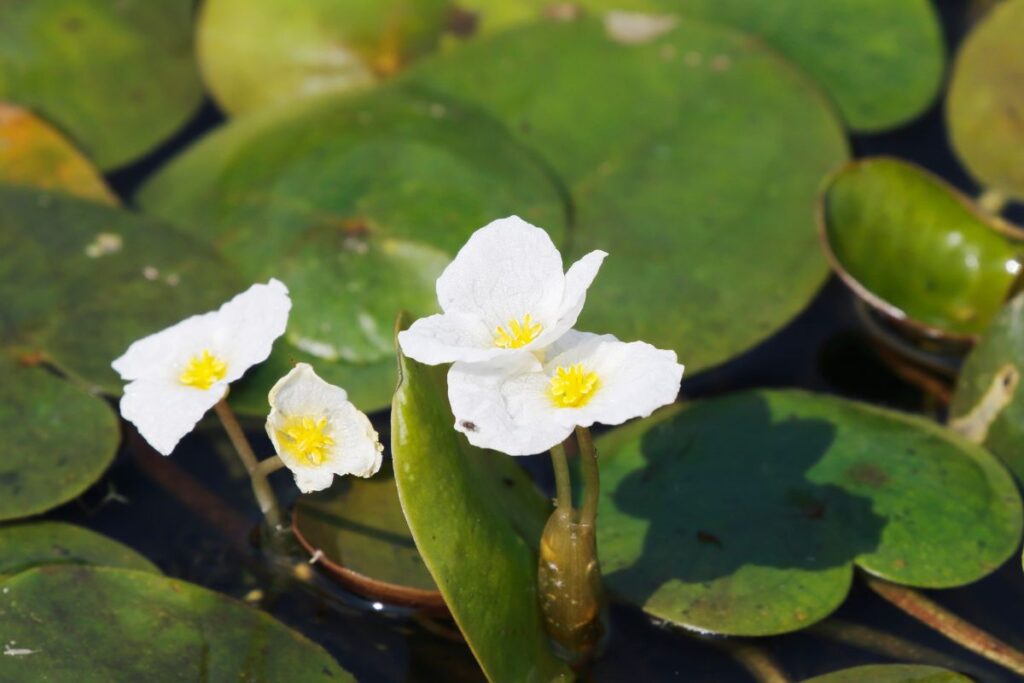
Moving on from Moss Balls, Frogbit is another great option to consider for your axolotl tank. Frogbit is a floating water plant that can act as an excellent source of shade and cover in the aquarium while still allowing light penetration. The leaves of the frogbit will create movement in the water which helps keep it oxygenated and also provide hiding places for any small fish or invertebrates you may have in there.
Frogbit has many advantages for your axolotl tank: its roots are designed to absorb nitrates, making it good at keeping toxins out of the water; it’s easy to maintain since all you need to do is trim off any dead foliage every now and then; and lastly, it grows quickly so that if you’re looking for something with a bit more coverage, this could be a great choice.
When setting up your axolotl tank with frogbit, make sure to give them plenty of space in order to properly grow their roots—otherwise, they won’t be able to take full advantage of their potential benefits. Additionally, try not to overcrowd the tank too much as this can cause algae blooms due to lack of light penetration. With these considerations kept in mind, frogbit will make a wonderful addition to your aquascape!
Water Lettuce
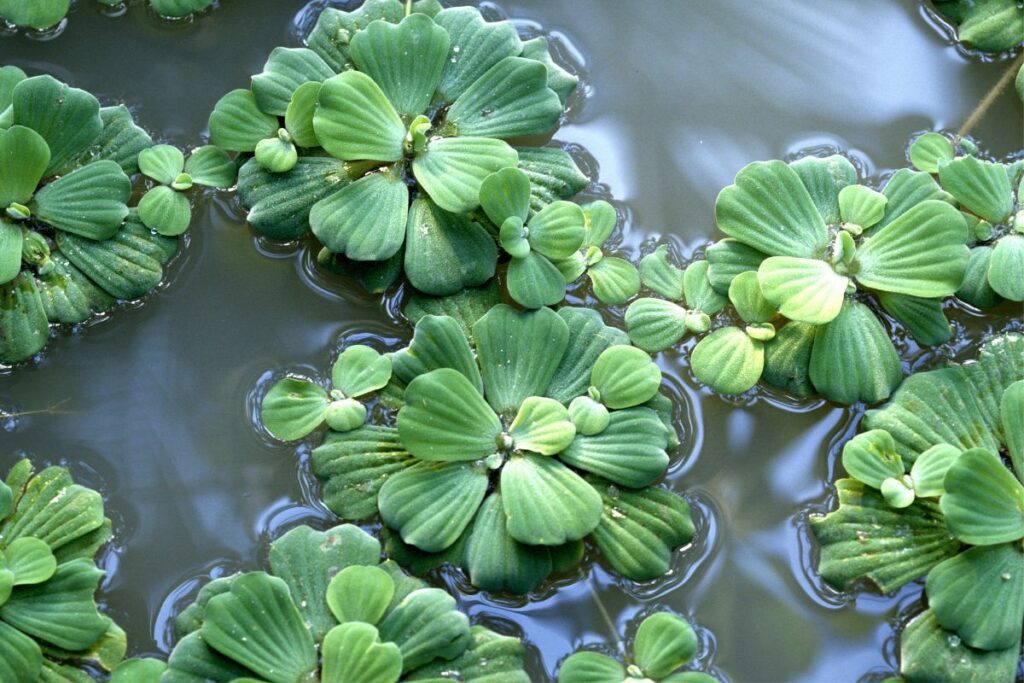
Water lettuce is a great addition to any axolotl tank! It’s easy to care for and provides plenty of shade for your aquatic friend. Here are three reasons why you should include water lettuce in your axolotl tank:
- It’s low maintenance – Water lettuce doesn’t require much attention, making it the perfect choice for busy owners who don’t have time to constantly monitor their aquarium plants. All you need to do is keep an eye on the growth rate and trim off any dead or wilting leaves as needed.
- It filters toxins out of the water – The roots of water lettuce help filter harmful chemicals from the water in your tank, resulting in cleaner and healthier conditions for your axolotl. This can be especially beneficial if you live in an area with hard tap water that contains high levels of minerals or metals.
- It makes a beautiful display – When planted correctly, water lettuce will create a stunning backdrop for your aquascape that adds visual interest and depth to your aquarium setup. Plus, its luscious green foliage creates an inviting environment where your axolotl can hide away when they want some privacy!
With proper care and maintenance, this plant can thrive beautifully in almost any type of freshwater aquarium—including those containing axolotls! So give it a try; you won’t regret it!
Banana Lily
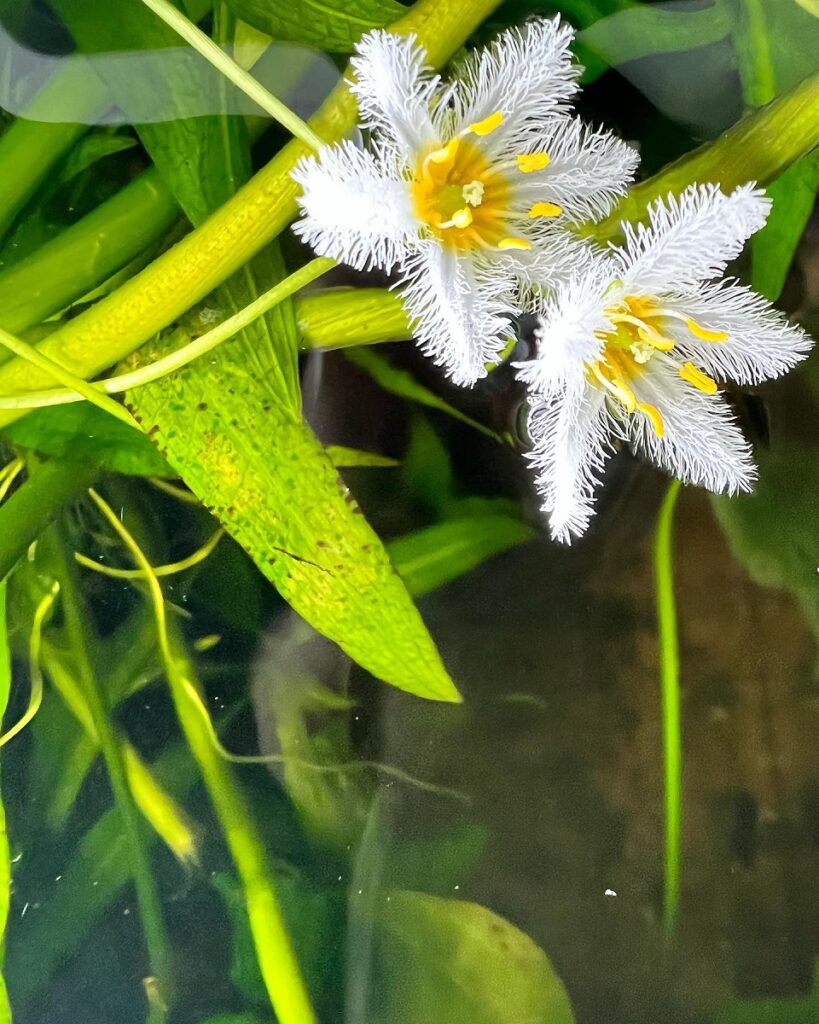
Coming from Water Lettuce, the next best aquarium plant for an axolotl tank is Banana Lily. This aquatic species of flower looks like a beautiful bunch of bananas and will add some color to your fish tank! It can be planted directly into the substrate or left floating on top of the water’s surface and will thrive in most freshwater conditions. The banana lily requires medium light levels and plenty of nutrients to really grow well—so it’s important to fertilize its soil occasionally.
This plant prefers temperatures between 68-82°F (20-28°C) with a pH range of 6.5-7.5, making it ideal for any type of axolotl tank environment. It needs low to moderate lighting as too much light could cause it to become leggy and lack good growth form. Regularly trimming off the dead leaves will help keep this attractive-looking aquarium plant healthy and full of life.
Pennywort
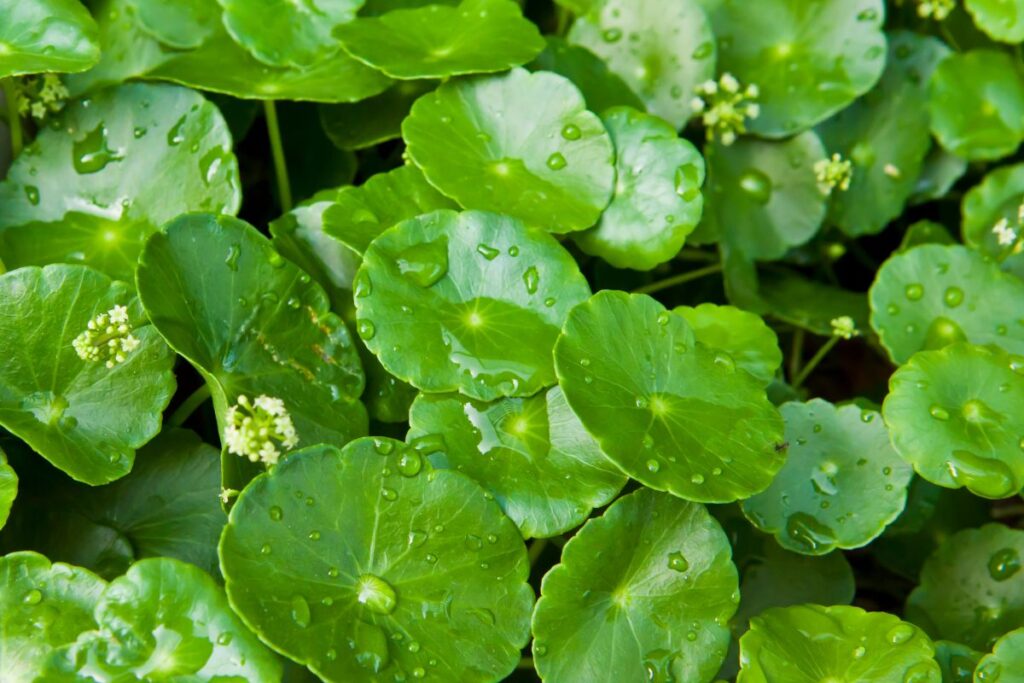
Pennywort is one of the best plants for an axolotl tank, as it grows quickly and provides a great deal of shade. Pennywort care is relatively simple—it requires full or partial light and should be planted in soil with good drainage. It can also handle temperatures between 55-85°F (13-29°C).
The benefits of pennywort are numerous; its growth rate helps oxygenate the water and create a natural filter by trapping debris. Additionally, pennywort offers shelter for small aquatic creatures that might otherwise become prey to your pet axolotl! The plant’s lush green leaves provide visual appeal too.
Overall, pennywort is a low-maintenance yet beneficial addition to any axolotl tank. Its hardiness makes it easy to maintain while still providing plenty of benefits both aesthetically and functionally. If you’re looking for an attractive but practical way to enhance your pet’s habitat, then look no further than this versatile plant!
Amazon Swords

Moving on from Pennywort, Amazon Swords are a popular choice for the axolotl tank. They’re tropical aquarium plants that can be found in many stores that sell fish and aquatics. These hearty plants have long stems with broad leaves that offer plenty of shade coverage—perfect for an aquatic environment like the axolotls!
Not only do they provide much-needed cover, but Amazon swords also help to oxygenate your water as well as give off waste—both essential components you need in any aquarium setup. Plus, they look beautiful when planted alongside other complementary species such as Java Ferns or Anubias nana. What’s more, these hardy plants require very little maintenance so there’s no need to worry about them taking up too much time and energy.
Overall, Amazon swords make a great addition to any axolotl tank because of their low-maintenance needs and ability to add extra beauty and color without making it difficult for you to maintain. If you’re looking for some greenery in your aquarium setup, then consider adding some Amazon Swords today!
Water Wisteria
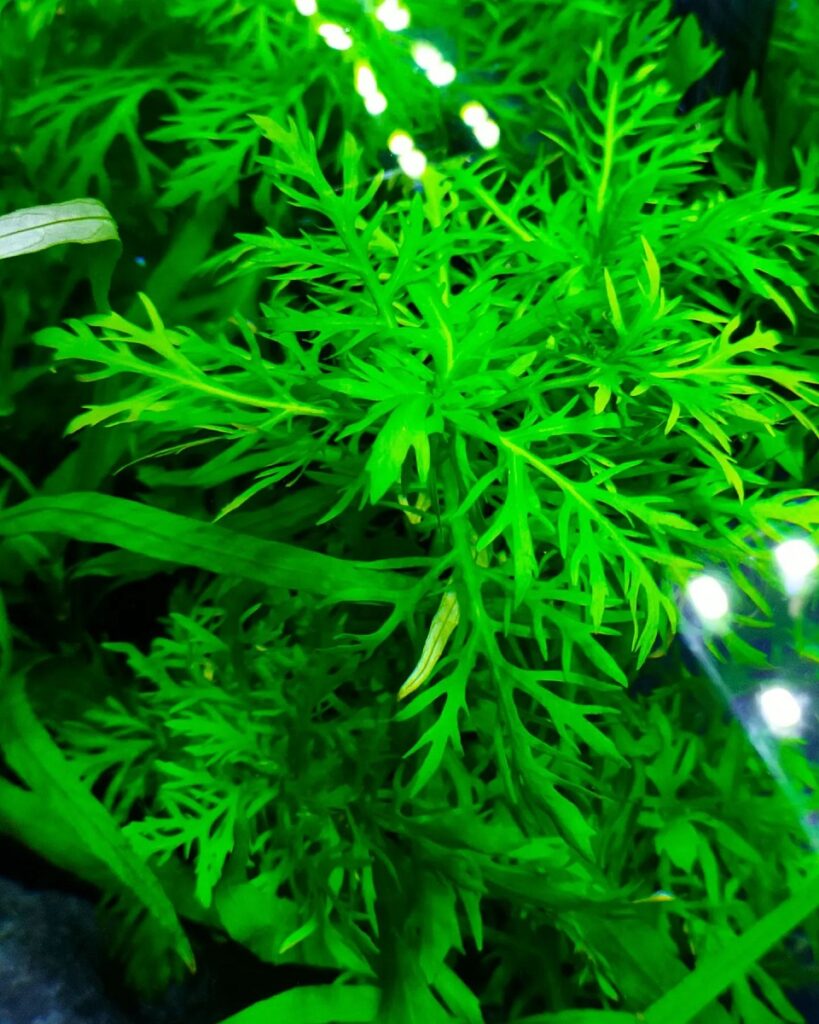
Water Wisteria is an excellent choice of aquatic plant for axolotl tanks. It provides a natural look to the tank and it can also help reduce nitrates, which helps maintain water quality in the tank. Water Wisteria looks great as well; its long wavy leaves give any aquarium that extra bit of color.
Here are some advantages of adding Water Wisteria to your axolotl’s tank:
- Its vibrant colors add beauty and interest to the tank
- The leafy foliage gives axolotls places to hide away when they need some privacy or rest
- Its roots will provide beneficial bacteria with additional nutrients
- Its oxygenating properties create better water circulation within the tank, helping keep your pet healthy
Adding these plants to your axolotl’s home not only increases its aesthetic appeal but also makes it easier to maintain good water conditions. This means more time enjoying your pet rather than worrying about its health. Plus, since Water Wisteria doesn’t require special lighting like other aquatic plants do, you don’t have to worry about high energy bills either! So if you’re looking for a low-maintenance way to spruce up your axolotl’s tank, then Water Wisteria should definitely be on your list of choices.
Brazilian Waterweed
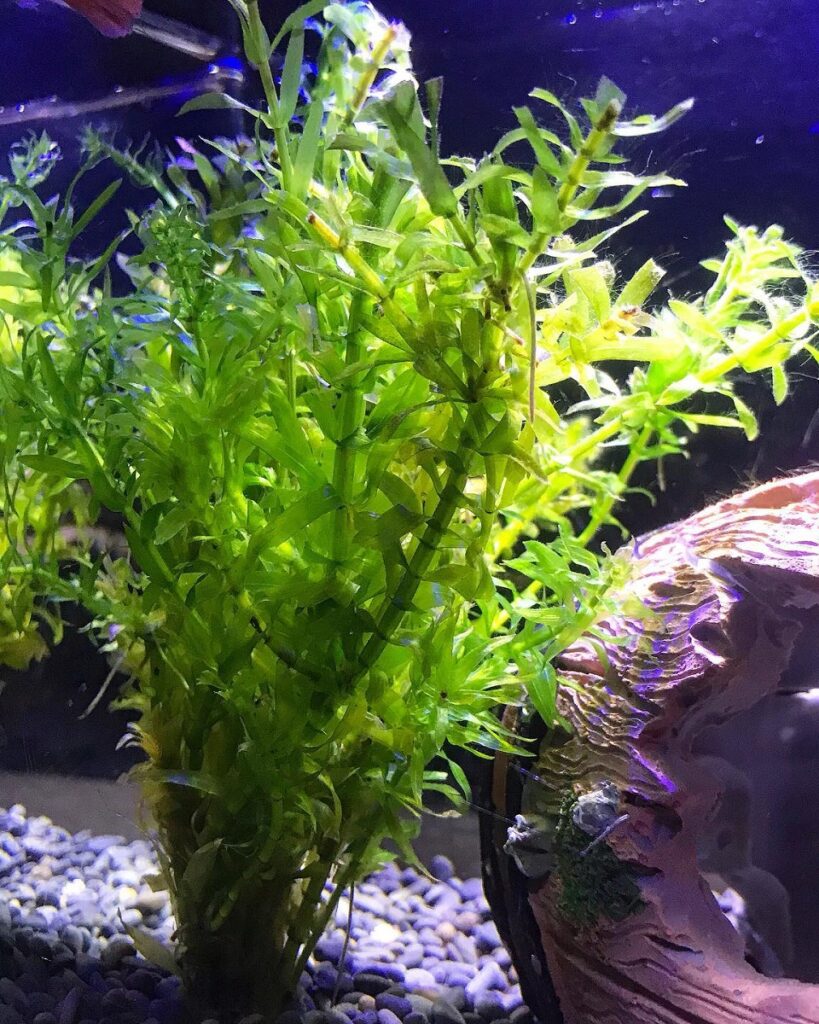
Brazilian Waterweed, or Egeria densa, is a great plant to have in an axolotl tank. It grows quickly and provides excellent shelter for the fish. Its long stems provide them with plenty of places to hide from predators and its feathery foliage gives them somewhere to rest. Brazilian pennywort, or Hydrocotyle leucocephala, is another good option as it adds texture and color to the tank while providing oxygenation and shade.
Both plants can be planted directly into the substrate or left floating on top of the water’s surface. They are both easy to maintain and don’t need much attention other than occasional pruning if they become too large. As these plants grow rapidly, you may want to consider adding more plants such as java ferns or Anubias barteri which will help keep their growth under control. Adding some waterweed aquarium decorations such as rocks or driftwood can also help create a natural-looking environment where your axolotls feel safe and secure.
Water Sprite

I highly recommend Water Sprite for any axolotl tank. This aquarium plant is a great addition to the underwater environment and it provides tons of benefits. Not only does it provide shade, but it also increases oxygen levels in the water which helps keep your axolotls healthy. Plus, its thick foliage gives them somewhere to hide if they’re feeling stressed or anxious.
Water Sprite can be grown both emersed (above water) and submerged (underwater). It grows best when left floating around the surface of the tank or attached to driftwood with suction cups. The leaves will start off green but as time goes on, they may turn yellowish-green—this is normal and doesn’t mean that anything’s wrong! All you need to do is trim away these older leaves once they begin turning brown. With proper care, Water Sprite will add an interesting texture and vibrant color to your axolotl tank.
Floating Crystalwort
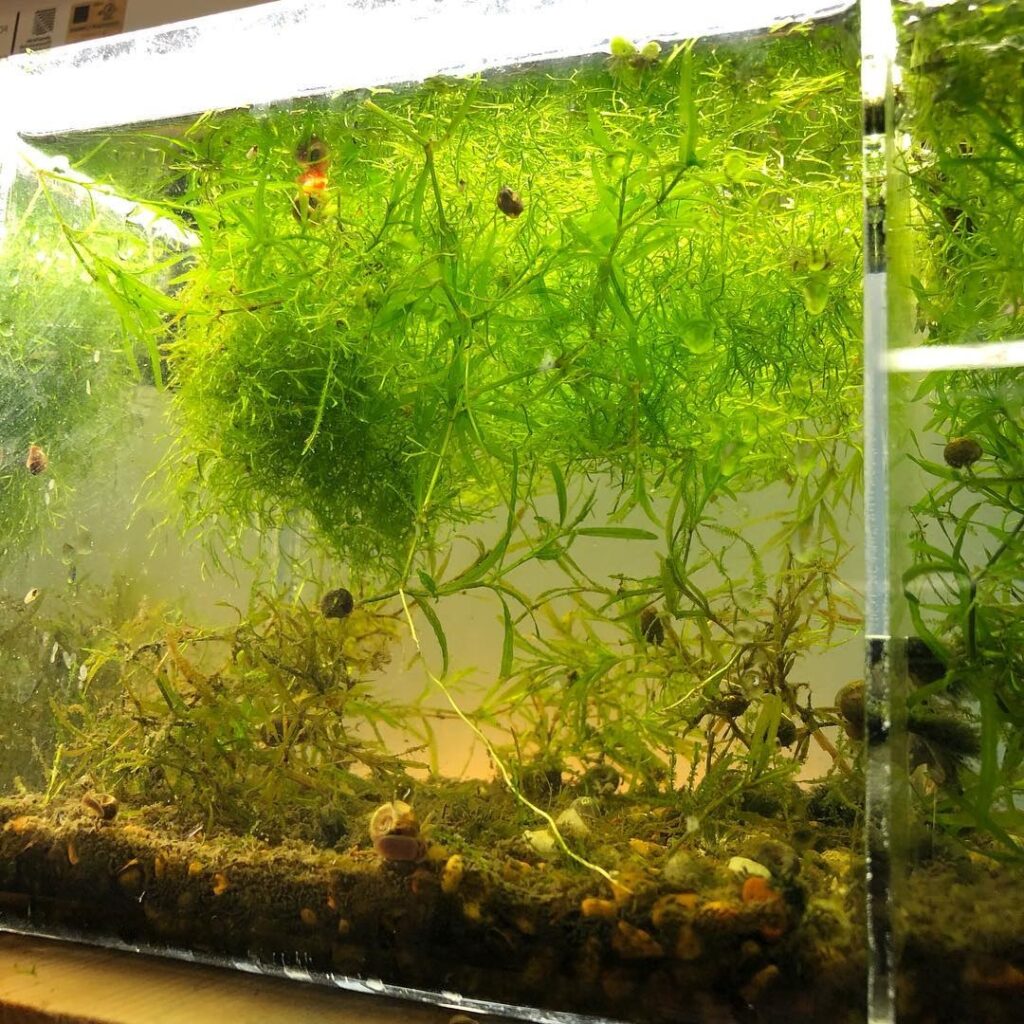
Floating Crystalwort is a great choice for an axolotl tank. This aquatic plant offers numerous benefits to your pet’s environment; from providing oxygen to hiding places and enrichment opportunities. Floating Crystalwort provides shade, helping the axolotl feel safe and secure in its home. It also helps control water quality by absorbing nitrates and other pollutants that can be harmful to the animal’s health. Plus, it looks beautiful!
Floating Crystalwort has delicate leaves of deep red or yellow accents, making it easy to decorate around. The small roots are perfect for anchoring rocks and decorations in place while still allowing plenty of swimming space for the axolotls. All these features make Floating Crystalwort one of the best plants you can choose for your tank!
Hygrophila Pinnatifida
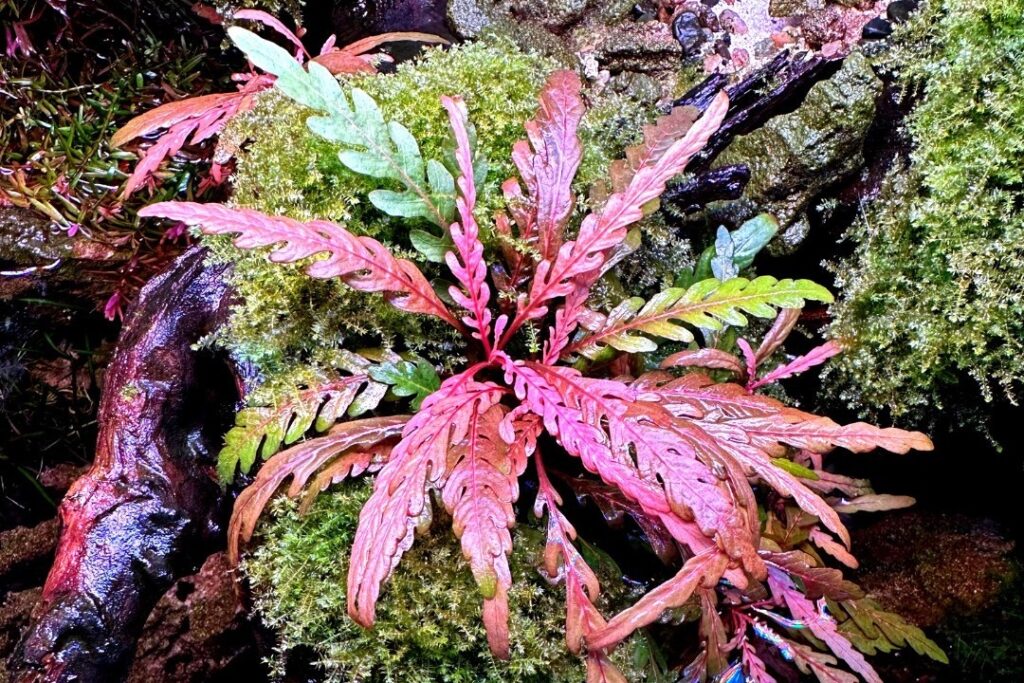
Moving on, Hygrophila pinnatifida is another great aquatic plant for an axolotl habitat. It’s a tropical stem plant that has long leaves and grows quickly. Its stems can get quite tall and it does need some trimming every once in a while to keep the aquarium looking nice. The red or pink color of its leaves also adds a unique aesthetic appeal to your tank. Plus, this hardy plant can tolerate low-light conditions so you don’t have to worry about investing in special lighting for it.
What makes this such an ideal choice for axolotls is its ability to provide them with shelter. Since they like their tanks densely planted, having several clumps of Hygrophila pinnatifida will give them plenty of hiding spots while still making sure they have access to plenty of oxygenated water. As long as you take proper care of it by regularly fertilizing and keeping up with maintenance, Hygrophilas should thrive nicely in any axolotl tank!
Elodea
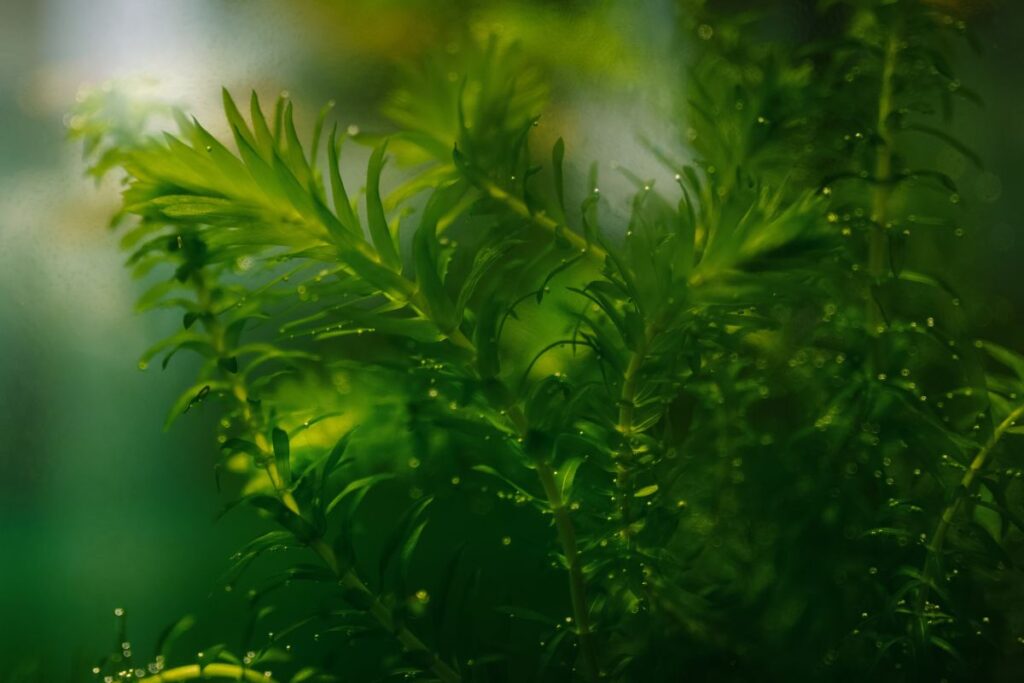
Elodea, also known as Anacharis or Canadian waterweed, is one of the best aquarium plants for an axolotl tank. It’s a fast-growing aquatic species that provide great benefits to any environment it inhabits—especially when it comes to providing shade and hiding spots for axolotls. Here are some important features of Elodea:
- Provides plenty of cover and shading options in the aquascape
- Acts as a natural filter by removing ammonia from the water
- Can grow up to 6 feet tall with enough light
- Does not require extensive care; just regular pruning and trimming
Elodea grows quickly, so you should be aware of how much space it can take up if left unchecked. You may need to regularly clip off overgrown stems in order to keep your tank looking its best. But besides being aesthetically pleasing, this plant offers lots of other advantages too! The leaves help absorb nitrates which prevents algae buildup while releasing oxygen into the water column. This helps create a more balanced ecosystem inside your tank—which is something all experienced aquarists strive for. Plus, Elodea has been proven to reduce stress levels in fish and amphibians alike, making them feel more secure and at home in their new habitat.
English Ivy
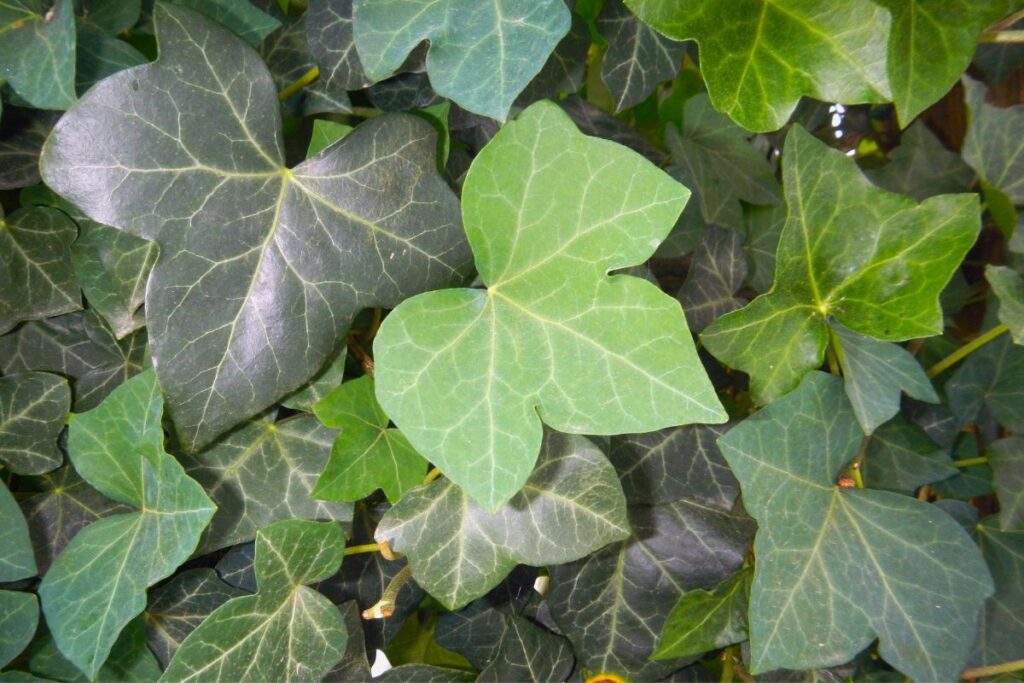
English Ivy is a great addition to any axolotl tank. It’s an attractive, low-maintenance plant that provides many benefits for these aquatic creatures. English ivy care is relatively easy; it prefers cool temperatures and medium humidity levels. It also loves indirect sunlight during the day and can tolerate low-light conditions. Additionally, English ivy aquariums are often used as natural filtration systems because they absorb nitrates from the water which helps keep your tank clean and healthy!
This hardy plant has other advantages too: its roots help provide shelter and protection for your axolotls; plus, its leaves create shade spots in the tank where they can hide away if needed. Plus, this fast-growing ground cover looks stunning when paired with colorful rocks or gravel at the bottom of the tank. All in all, adding some English ivy to your aquascape will give you a lush underwater garden that both you and your pet Axolotl can enjoy!
Water Hyacinth
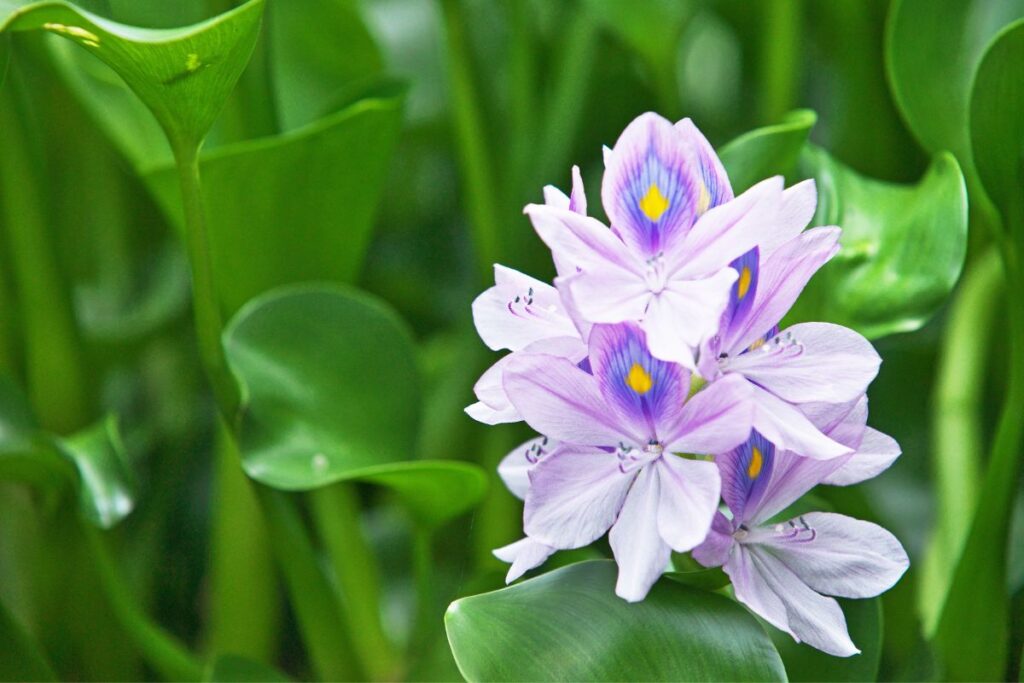
The water hyacinth is a beautiful aquatic plant that can be used to decorate an axolotl tank. It has broad green leaves, with delicate lavender flowers that sway gracefully in the current of the aquarium. Not only does it make a pretty addition to any tank, but its roots also offer some benefits for your pet’s health and well-being.
Water hyacinths help filter harmful toxins from the water that can cause harm to your axolotl. As they absorb pollutants through their root systems, they provide additional oxygenation and cleanliness to the aquarium environment. They also act as hiding spots or resting places for shy axolotls looking for a place out of sight! Plus, if you don’t want too much space taken up by these plants in your tank, you can simply trim back their stems occasionally so they won’t get too big.
In short, water hyacinths are an excellent choice when selecting plants for an axolotl tank—not only do they look good but they have practical uses too! With proper care and maintenance, this aquatic plant will serve both aesthetic and functional purposes in keeping your little buddy happy and healthy.
Red Root Floater
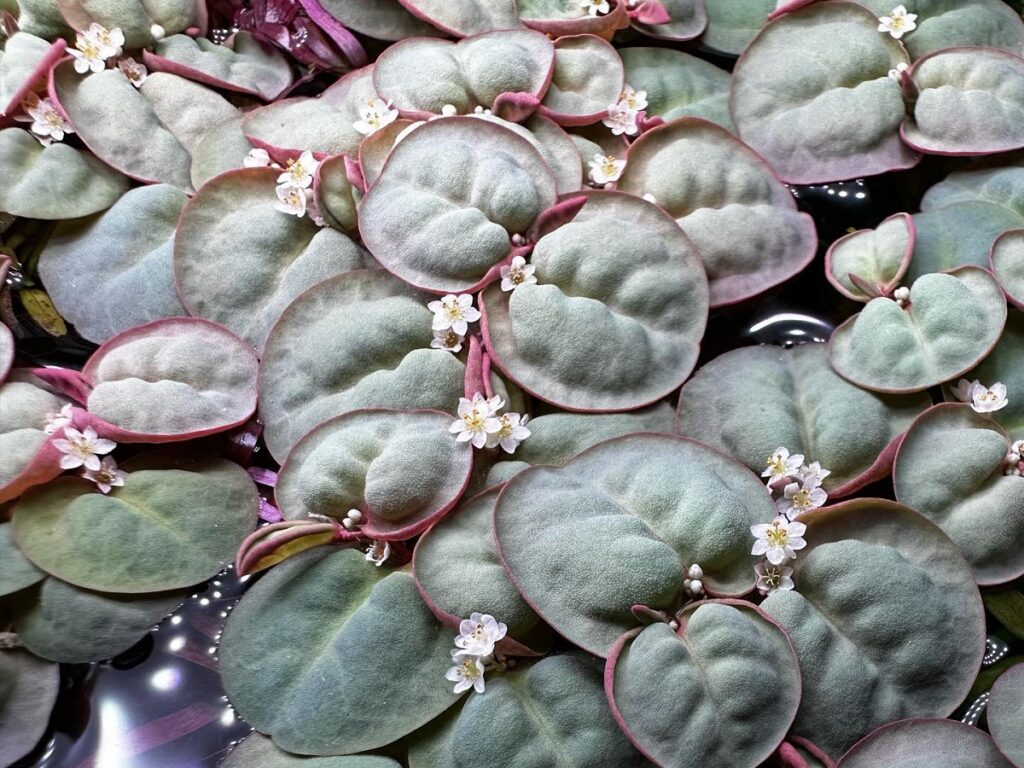
The red root floater is a great choice for an axolotl tank. This floating plant grows quickly and can provide shade, shelter, and privacy for the axolotls in the aquarium. It also helps to keep nitrate levels low by absorbing excess nutrients from the water. The roots of this plant are bright red, adding color to your aquascape that you won’t find with other plants. Red root floaters have long stems with many small leaves on each stem which gives them their distinctive look when they float at the surface of the water.
Red root floaters are easy to care for and propagate easily as well. They can be propagated by trimming off excess branches or even dividing up large clumps into smaller ones. You should place these plants near the edges of your tank so that they don’t get too crowded with other aquatic life such as fish or shrimp. If cared for properly, these plants will continue to thrive in your axolotl tank and create a beautiful display!
Sweet Potato Vine

The sweet potato vine is a great addition to any axolotl tank! This aquatic plant provides an excellent hiding spot for your pet, as well as helps to keep the water clean and oxygenated. Sweet potato vines don’t require much maintenance; they can be planted directly into the substrate of your aquarium or potted in soil with their roots submerged in the water. Their long tendrils provide plenty of surface area for small creatures such as shrimp and snails to hide amongst. You could also cut some pieces off and tie them around decorations inside the tank, creating additional cover spots for your axolotl!
Aside from its practical benefits, sweet potato vines are also known for their vibrant colors—ranging from green to yellow to purple—which will add a splash of color to your aquascape. As if that wasn’t enough, this versatile species can even survive out of water too! So what are you waiting for? Get yourself some sweet potato vines today and give your axolotls a more natural home environment.
Sagittaria
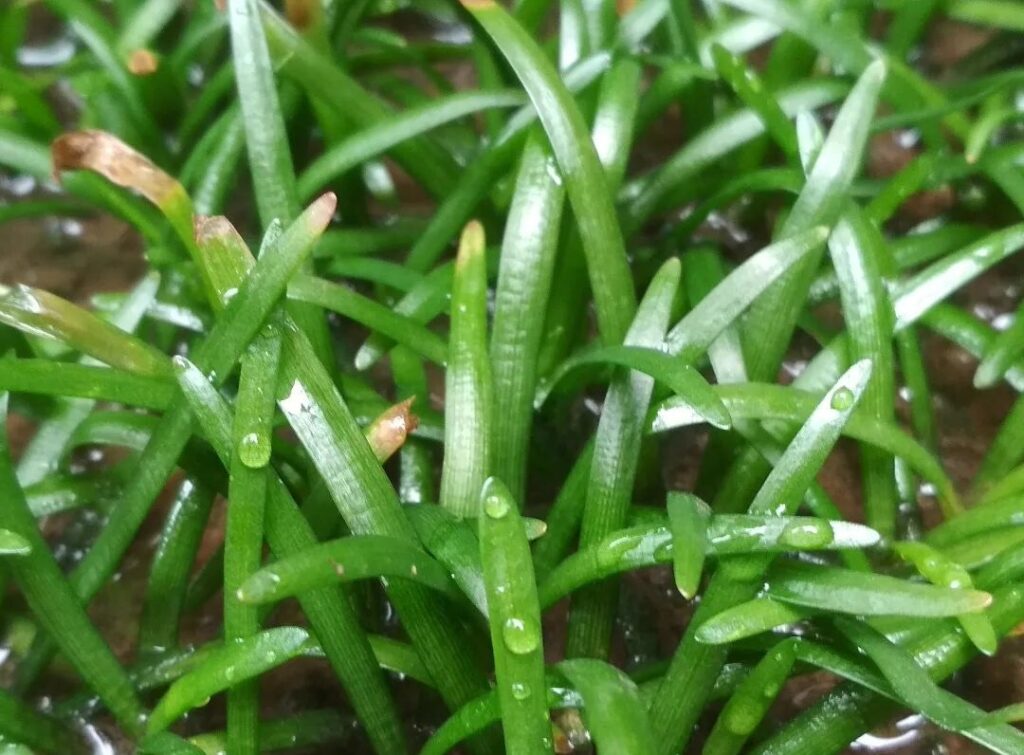
Moving on from the Sweet Potato Vine, another popular plant for an axolotl tank is Sagittaria. It’s a genus of aquatic plants that are widely available and easy to care for in freshwater aquariums. One of the most commonly used species for tanks is Sagittaria subulata, also known as a dwarf sag or needle-leafed arrowhead. This species has narrow green leaves with pointed tips and can reach heights up to twelve inches tall. Other great choices include Sagittaria montevidensis which grows much taller and has broader leaves than S. subulata, as well as Sagittaria latifolia which produces small white flowers during the summer months.
Sagittaria offer plenty of benefits for your axolotl tank beyond just looking nice; they help keep the water clean by removing pollutants through photosynthesis, provide cover and hiding places for fish, shrimp, and other aquatics creatures such as axolotls, and add oxygen to the water while absorbing carbon dioxide too! Plus their thick root systems act like a natural filter system by trapping debris before it reaches the bottom of your tank. For these reasons and more, incorporating some Sagittaria into your setup is definitely worth considering if you want to create a beautiful underwater oasis for your beloved pet axolotl!
Salvinia Natans
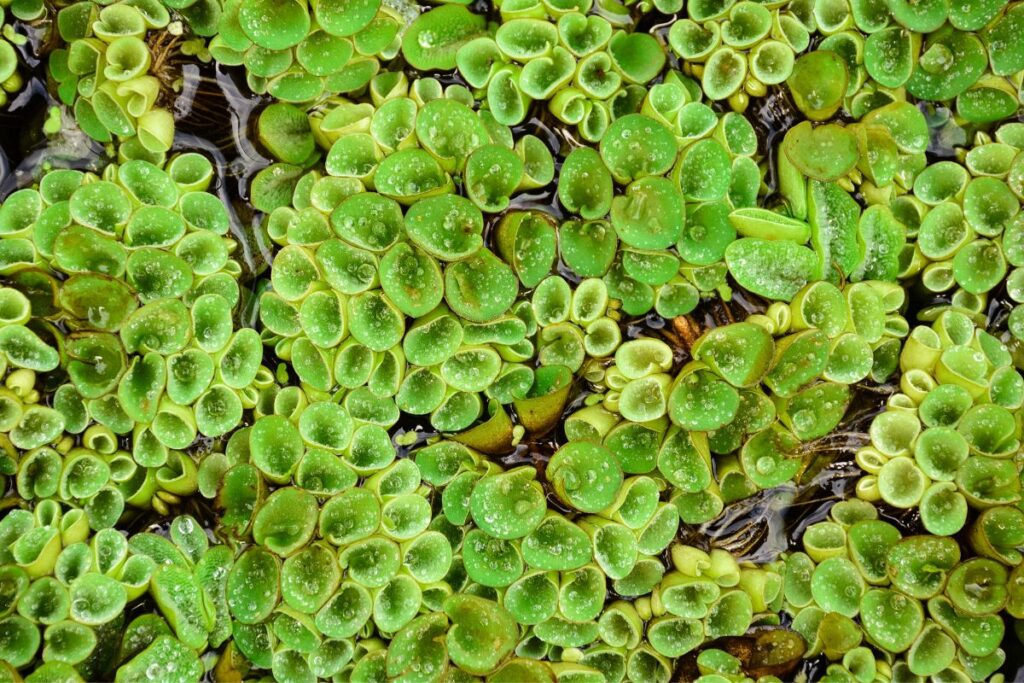
Salvinia natans is an excellent floating plant for axolotl tanks. It’s a great addition to the tank, as it adds both beauty and functionality. Not only does it provide aesthetic value, but also provides cover and shade for the axolotls. Here are some of its features:
- Grows quickly in aquariums
- High oxygenation levels help keep the water clean
- Easy maintenance
- Reduces stress on fish by providing shelter from light or predators
In terms of planting Salvinia Natans, there’s no need to worry—they adapt quite easily to most aquatic environments. All you’ll need is good lighting, adequate substrate and occasional trimming. Since it grows so fast, regular thinning is necessary otherwise it will take over your tank! If you’re looking for a beautiful way to add more coverage to your axolotl tank, this could be the perfect option for you.
Guppy Grass
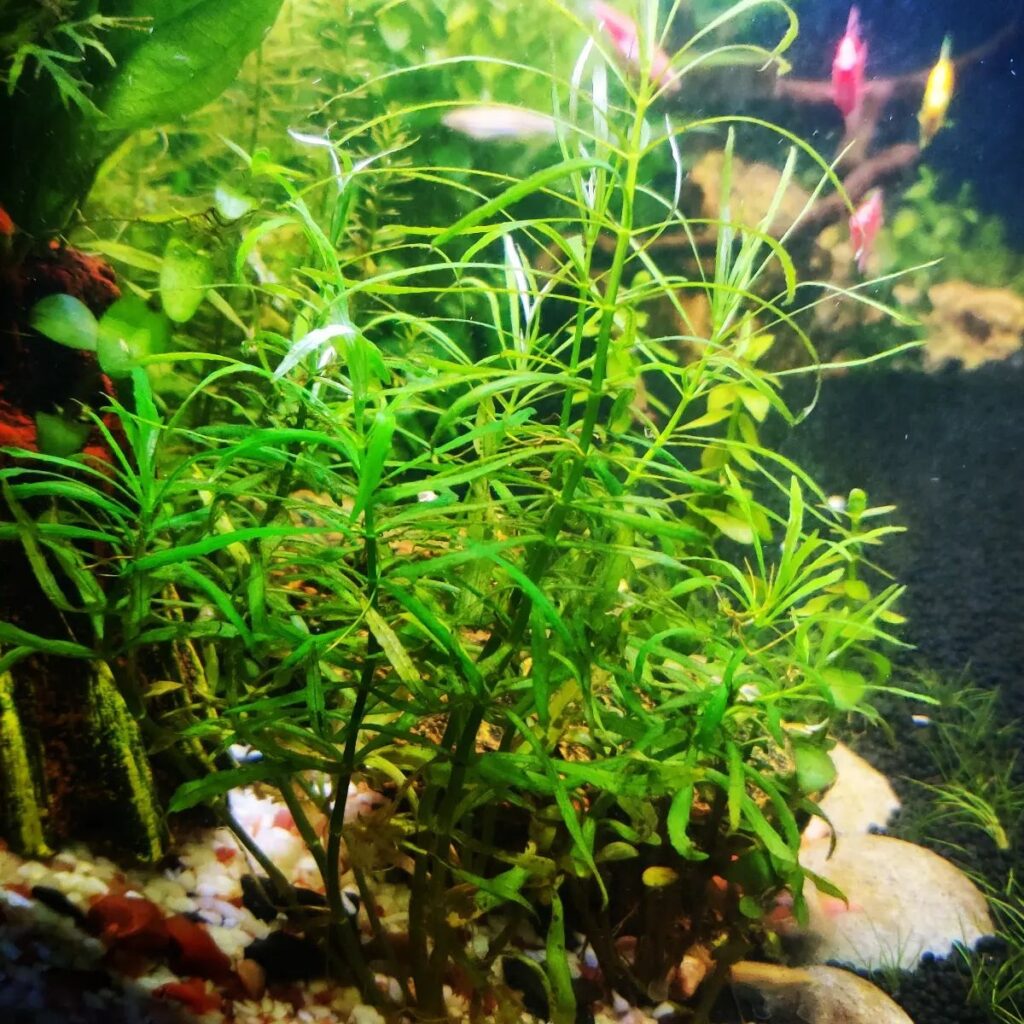
Next up, we have the guppy grass. This is a great live plant to add to an axolotl tank as it’s fast-growing and provides plenty of hiding places for your pet. It also adds oxygen to the water which helps keep your tank clean and healthy. Plus, if you have other fish living in the same tank, they’ll love swimming around and playing hide-and-seek amongst its leaves!
Guppy grass is easy to care for once established—all you need to do is make sure there’s enough light and nutrients available. You can either leave it floating on top or anchor it down with rocks (make sure they’re aquarium safe!). Regular trimming will help encourage new growth so that your axolotl has plenty of places to explore. In addition, this type of vegetation absorbs ammonia from the water, making it even healthier for everyone living in the tank!
Benefits Of Plants In Your Axolotl Tank
Having plants in your axolotl tank is beneficial for various reasons. First of all, it provides a natural source of food and shelter for them. Live aquatic plants offer an ideal environment for microorganisms to thrive, which can provide the necessary nutrients that axolotls need to stay healthy. It also helps oxygenate the water by supplying extra oxygen through photosynthesis. This encourages fish health and growth as well as provides hiding spots to reduce stress levels.
In addition, live plants are aesthetically pleasing, adding color and texture to the aquarium while making it look more natural than if there were only plastic or artificial decorations present. They help create a sense of security for your axolotl by giving it places to hide from light and predators. Furthermore, having live vegetation in their tanks makes maintaining good water quality easier since they act as biological filters that absorb toxins such as ammonia and nitrites from the water column. All this makes plants essential components in any axolotl tank setup!
Disadvantages Of Plants In Your Axolotl Tank
When considering adding plants to your axolotl tank, it’s important to be aware of the potential pitfalls that come with them. As beautiful as they may look, there are some downfalls that can make life more difficult for both you and your pet.
The first issue is root rot. Axolotls like cool water so if the temperature in their tank rises above 68 degrees Fahrenheit (20 Celcius), this can cause plant roots to start decaying. This not only destroys the appearance of the greenery but also produces a stench from rotting matter. It can also lead to an increase in ammonia levels which could harm your axolotl’s health or even kill them.
Another problem associated with having plants in aquariums is clutter. Too many aquatic plants can potentially interfere with swimming space for your axolotl and make cleaning harder for you due to additional maintenance required on the foliage—such as pruning and trimming away dead leaves or flowers. Furthermore, too much vegetation can contribute to an algae bloom; when this happens, it’ll quickly become problematic because it will block out light needed by other organisms living in the tank as well as create a further mess that requires tidying up regularly.
Overall then, while plants do have numerous benefits when placed into an aquarium environment, extra care must be taken when introducing them into an axolotl tank to avoid any negative consequences such as root rot and increased tank clutter resulting in hazardous algae blooms.
Can Axolotls Have Any Plants In Their Tank?
Yes, axolotls can have plants in their tank. There are a few things you should keep in mind when selecting plants for an axolotl tank. First, you should make sure that the plants you choose are safe for axolotls. This means that they should not be poisonous or sharp, and should not have any toxic chemicals on them. Additionally, the plants should be able to thrive in the tank’s environment. This means that the water should be the correct temperature and pH for the plants, and the substrate should not be too coarse. Some good plant choices for axolotls include Java moss, water wisteria, and Anubias.
When adding plants to an axolotl tank, you should make sure that you provide enough space for the axolotl to move around. This means that the plants should not cover the entire tank. Additionally, you should consider the lighting in the tank. Some plants require more light than others, so you may need to invest in a light fixture that is appropriate for the plants you have chosen. Lastly, you will need to provide the plants with enough nutrients to keep them healthy. You can do this by adding liquid fertilizers to the tank or by incorporating plants that have built-in fertilizers, such as duckweed or hornwort.
Related Post:
What Plants Are Good For Turtle Tanks?
Conclusion
In conclusion, axolotls are unique and interesting creatures that require a specific kind of environment to thrive. Careful consideration should be given when selecting plants for an axolotl tank, as it’s important to choose varieties that will not only provide shelter and food but also ones that won’t overcrowd the tank or cause harm to the animal. The plants listed above are all excellent choices for an axolotl aquarium.
I personally have had great success with Hornwort and Anubias in my own tanks; they offer plenty of hiding places for the axolotl while still providing enough space for them to swim freely. I’ve found that the other options on this list are fairly easy to maintain if you keep up with regular maintenance tasks such as pruning back overgrown foliage and replacing dead leaves when necessary.
Overall, these plants can help create a healthy underwater ecosystem where your axolotls will feel safe and comfortable. With careful selection and proper care, these aquatic plant species can make any tank look beautiful while offering essential benefits to its inhabitants!
